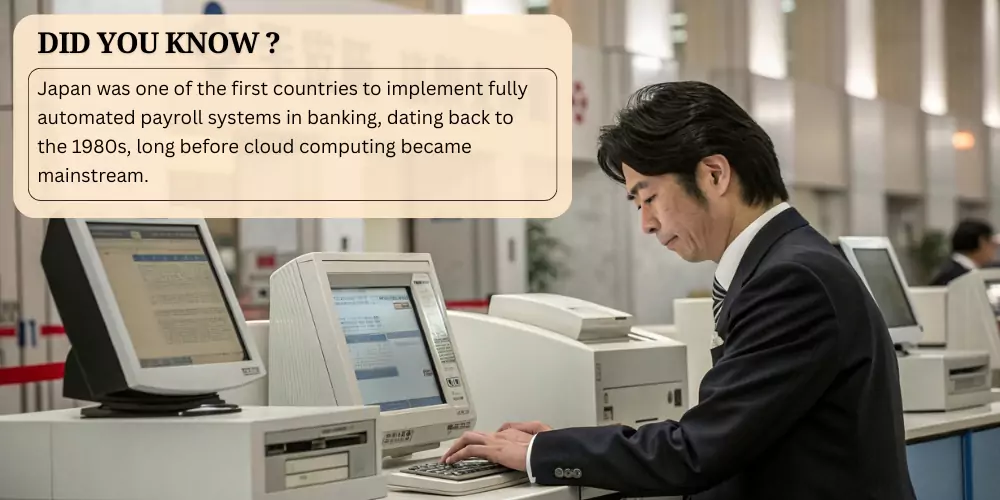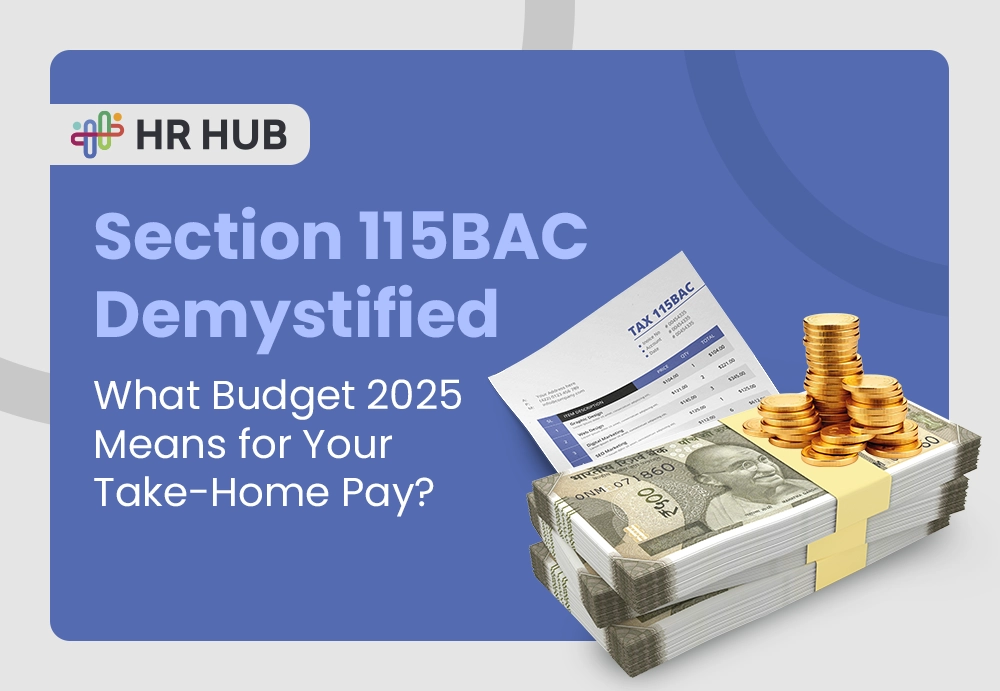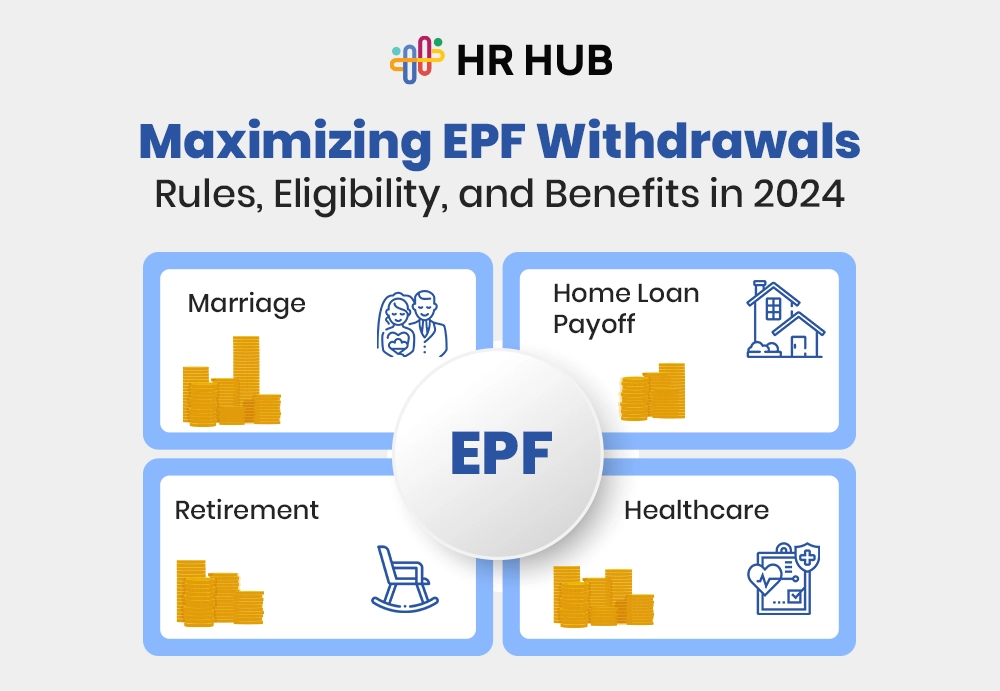“Every penny matters in banking. So why should payroll be left behind?”
Banks are the beating hearts of the economy—buzzing with transactions, managing trust, and building financial futures. However, while they're laser-focused on digitizing customer experiences, there's one internal area that remains stuck in the past for many: payroll.
Manual spreadsheets, dated tools, and chaotic month-ends. Sound familiar?
If banks can automate ATM networks, AI-driven fraud detection, and digital KYC, isn’t it time their salary processing got a serious upgrade?
Welcome to the world of the automated payroll system—the silent engine that’s quietly transforming modern banking operations from the inside out.
Banking Payroll Isn’t Simple. It’s a Maze.
Before we even talk about automation, let’s understand why payroll in banking is so uniquely complex.
Banks don’t operate with one-size-fits-all employees. Here’s what you’re dealing with:
- Branch staff with fixed salaries
- Relationship managers on performance-based commissions
- Night shift teams need differential pay and overtime.
- Probationary employees with contract-specific terms
- Employees across multiple states, each with different professional tax structures
- Variable bonuses, loyalty payouts, and reimbursements
Now, combine all of this with:
- Monthly leave encashments
- Arrears from backdated salary changes
- Statutory compliance (TDS, PF, ESI, LWF, etc.)
- Union-specific agreements in public-sector banks
- Financial year-end adjustments and audit-ready reports
It's not just payroll. It’s payroll with the complexity of a high-frequency trading desk—and with zero room for error.
That’s precisely where an automated payroll system steps in as a strategic game-changer.
What Exactly Is an Automated Payroll System?
Let’s kill the misconception that payroll automation is just about using software instead of spreadsheets.
A true automated payroll system is:
- Rule-driven: It applies complex logic automatically across different employee types.
- Integrated: It syncs with attendance, leave, HRMS, and finance modules.
- Smart: It detects errors, suggests corrections, and adapts to new tax or policy changes.
- Transparent: It creates logs, audit trails, and compliance reports without manual input.
- Employee-facing: It empowers staff with self-service dashboards for payslips, tax forms, and salary queries.
In essence, it turns payroll from a monthly headache into a streamlined, intelligent operation.

How Automated Payroll Software Is Revolutionizing Banking Operations
Let’s dive deeper into the real-world impact areas where automated payroll software is not just improving—but completely re-engineering—banking operations from within:
1. No More Fear of Compliance Audits
Banking is built on trust, and regulatory compliance is the foundation. However, when it comes to payroll, compliance can often be a landmine. From incorrect TDS deductions to missed state-level contributions, the risks are real and expensive.
Here’s how automation changes that:
- Live updates of tax regulations: Whether it’s a mid-year change in PF limits or a revised gratuity cap, automated payroll systems instantly reflect the update across every affected employee profile.
- Regional customization: Professional tax in Maharashtra differs from that in Karnataka. The system accounts for this without needing manual interventions or multiple templates.
- Automated statutory documentation: Need to submit Form 24Q, Form 16, or ECR files to EPFO? The system generates and formats them in accordance with regulatory guidelines, complete with digital signatures and filing-ready exports.
- Audit trail by default: Every salary edit, deduction override, or bonus adjustment is logged with a timestamp and user identity, creating an unbroken trail of evidence.
- Proactive alerts: Before issues arise, the system notifies your payroll team if something appears amiss, such as missing PAN details, unapproved shifts, or unusual deductions.
Result: No more last-minute panic during inspections or board reviews. You walk into every audit prepared.
2. Accuracy at Scale, Even in Multi-Branch Environments
Banking operations are massive, nd so is their workforce spread. You may have one HR team in Mumbai managing payrolls for employees in 30 different cities, each with their own time zones, shifts, or regional allowances.
An automated payroll system handles this scale without a sweat:
- Dynamic logic-based processing: An employee working in a metro branch gets a city compensatory allowance. Another posted in a rural branch gets a hardship allowance. The system applies the correct logic based on predefined rules—no one is missed, and no one receives the wrong amount.
- Real-time attendance mapping: A teller’s biometric data, logged at 9:15 AM in Lucknow, immediately reflects in the central system. No backdated updates or guesswork.
- Automated escalations and approvals: Instead of HR having to chase down 10 managers for bonus sign-offs, the system routes requests through a pre-configured hierarchy and logs the entire approval chain.
Bonus Benefit: Even during mergers or structural reorganizations, the system can scale and adapt with just a few configurations—no need for migrations or disruptions.
3. Stronger Data Security (Because Banking Can’t Afford Breaches)
Banks handle critical customer data with vault-like security. Shouldn't the same standard apply to employee salary records?
Here’s how a robust automated payroll software protects sensitive information:
- Military-grade encryption: Every employee record, from their PAN number to variable payout, is encrypted both in transit and at rest.
- Zero-trust architecture: Access is strictly based on roles—finance can’t see HR data, and branch HR can’t access the head office payroll without permission.
- Activity logs for traceability: Who viewed the CEO’s salary? Who adjusted a payroll entry at midnight? The system knows.
- Disaster recovery readiness: Cloud backups are created at regular intervals and stored in geo-redundant zones, ensuring that no ransomware or data failure can compromise critical payroll data.
In a world of rising cyber threats, this kind of protection isn’t optional—it’s essential.
4. Massive Time Savings Across HR, Finance, and IT Teams
Payroll shouldn’t be a full-time job. And yet, many banks dedicate entire weeks to processing and validating salaries.
Here's what happens without automation:
- Manual attendance collation from multiple branches
- Endless cross-checking of incentives and LOPs
- Scrambling to calculate last-day salary for separated employees
- Manual uploading of bank transfer files
- Creating month-end reports, manually formatted for management
Now, here’s the post-automation reality:
- Employee data pulls automatically from HRMS and biometric systems
- Payroll gets processed with a single click using pre-validated rules.
- Payout files are auto-generated, encrypted, and sent to finance.
- Salary registers, cost center breakdowns, and journal entries are generated instantly.y
Result: What once took 6–8 working days now takes a few hours, giving your teams back time to focus on strategy, not just operations.
5. Elevated Employee Experience Across the Board
Banking is a demanding industry characterized by tight shifts, performance pressure, and regulatory discipline. In such an environment, payroll shouldn’t become an employee’s headache.
With an automated payroll system, employees can:
- Access salary slips, tax declarations, and bonus breakdowns from anywhere, anytime
- Submit reimbursement claims or declare investments digitally with auto-validation
- Get instant notifications when salaries are processed or reimbursements are approved.
- Download tax proofs, Form 16, and full salary history from a mobile app.
Think of it as an always-on HR helpdesk that never sleeps, never delays, and never gives incorrect answers.
6. Smooth Integration with Core Banking and ERP Systems
In most banks, payroll doesn't exist in a silo. It needs to speak to:
- Core Banking Systems for salary disbursal
- HRMS tools for onboarding, exits, promotions, and transfers
- Time-tracking tools for shift banks and overtime
- Government portals for compliance filing
- ERP platforms for accounting and expense management
A modern payroll system doesn’t just integrate—it syncs intelligently:
- Pushes payroll summaries directly into accounting ledgers
- Tags payroll to business cost centers (e.g., branch-wise or department-wise)
- Automates TDS payments and challan generation
- Validates employee PAN/Aadhaar against government APIs
When integration is seamless, payroll becomes a living, breathing part of your banking infrastructure—not a separate process running on the sidelines.
How to Choose the Right Automated Payroll System for Your Bank
Because in banking, not every software is "bankable."
With dozens of payroll solutions in the market, it’s tempting to pick the one with the slickest interface or the lowest price tag. But banks don’t need just a payroll system—they need a resilient, audit-ready, bank-grade payroll engine that can keep up with compliance, complexity, and scale.
So, how do you separate a basic payroll tool from a truly powerful automated payroll system built for modern banking? Use this checklist—each item is non-negotiable.
1. Bank-Grade Security Standards
If your payroll system doesn’t treat employee data like it treats customer data, you’re already exposed.
What to Look For:
- AES-256 encryption for stored data and SSL for transmission
- Multi-factor authentication (MFA) and IP restrictions
- Role-based access down to individual payroll actions
- Real-time alerts for unauthorized access or anomalies
- Regular penetration testing and data breach protocols
Pro Tip: Ask the vendor if their system is ISO 27001 or SOC 2 certified. If not, walk away.
2. Complex Salary Structure Support
Banking roles range from probationary clerks to high-performance relationship managers to compliance heads, and each one needs a custom pay logic.
What to Look For:
- Rule-based salary configurations for CTC splits, bonuses, commissions, and allowances
- Overtime handling with night-shift differentials
- Auto-adjustments for late joining, unpaid leaves, or mid-cycle terminations
- Custom heads for variable pay, loyalty bonuses, ESOPs, or gratuity overrides
Pro Tip: Ask for a live demo of a multi-structure payroll run. Don’t settle for generic pay templates.
3. Branch-Wise Rule Management
In multi-branch setups, local rules matter. Tax slabs, state-level holidays, and LWF contributions—all vary.
What to Look For:
- Location-specific pay configuration
- Automatic detection and application of state taxes
- Mapping of employees to correct regional cost centers
- Ability to define different calendars or cut-offs per branch
Example: If Tamil Nadu observes a different set of holidays from Gujarat, your system should reflect this in leave and attendance records, without requiring manual updates.
4. Taxation Engine with Instant Compliance Updates
Bank audits are unforgiving. If your payroll system lags behind statutory changes, your bank will likely bear the consequences.
What to Look For:
- Auto-updates for PF, ESI, TDS, professional tax, and gratuity changes
- Integrated statutory report generation (Form 16, Form 24Q, PF/ESI returns)
- State-wise PT logic with slab mapping
- Automated digital signatures and ready-for-upload CSV formats
Pro Tip: Choose a vendor that actively monitors Indian labor laws and tax portals to provide real-time updates, rather than one that waits for clients to request them.
5. In-Depth Reporting for Finance, HR, and Auditors
Payroll isn’t just about credits. It feeds into MIS reports, compliance audits, cost control dashboards, and executive summaries.
What to Look For:
- Dynamic report builder with filters (branch, grade, role, etc.)
- Cost-to-company analytics with YoY trends
- Integration-ready exports for Tally, SAP, or Oracle
- Department-level breakups and accrual calculations
- Audit logs with timestamps, IP tracking, and data lineage
Use Case: Your CFO should be able to pull a year-end payroll projection filtered by function and geography, without raising a ticket.
6. Biometric and Attendance System Integration
Inaccurate time tracking leads to payroll errors, compliance risks, and employee dissatisfaction.
What to Look For:
- Real-time sync with biometric devices or access cards
- Geo-fenced attendance for on-field staff
- Auto-adjustment of late marks, overtime, half-days, and compensatory offs
- Custom shift and roster configuration with override logs
Bonus Tip: Ensure the system supports both online and offline attendance sync, especially useful for branches with unstable connectivity.
7. Scalability from 100 to 10,000+ Employees
Don’t choose software that only works for you today. Choose one that grows with you—across people, branches, and complexity.
What to Look For:
- High concurrency processing for peak payroll loads
- Cloud-first infrastructure for infinite scalability
- Multi-company and multi-entity support under one login
- Ability to clone rules or structures for faster expansion
Scenario: If your bank acquires another regional bank, your payroll system should be ready to onboard 2,000 new employees without structural collapse.
8. Employee Self-Service Portal
You shouldn’t be answering “Can you resend my payslip?” 20 times a week. Empower employees to help themselves.
What to Look For:
- Secure login with SSO or OTP
- Mobile-friendly interface with multi-language support
- View/download payslips, Form 16, investment declarations, and tax summaries
- Claim reimbursements, submit proofs, and track approvals
Bonus: Look for chatbots or AI assistants that can instantly answer payroll queries.
9. Mobile Readiness for On-the-Go Banking Staff
Not all your employees sit at desks. From field officers to regional managers, mobility matters.
What to Look For:
- Fully responsive UI or dedicated mobile apps
- Offline access for payslips and tax forms
- Push notifications for payroll events (salary credit, approval pending, etc.)
- Location-based attendance and expense logging
Use Case: A traveling auditor should be able to check their salary credit and download Form 16 from a train, without having to wait until Monday.
10. Industry Expertise: Banking + Payroll = Must-Have Combo
A payroll provider who understands FMCG or IT won’t know what “DA Merger” or “Banking Bipartite Settlements” mean. And that can lead to significant process gaps.
What to Look For:
- Prior experience with BFSI clients
- Configurations for performance-linked incentives, shifts, and union pay rules
- Familiarity with bank-grade approval structures and audit protocols
- Understanding of Indian banking workforce models—permanent, contract, outsourced, unionized
Question to Ask: “How have you handled compliance and salary logic for PSU or cooperative banks?” Their answer will tell you everything.

Beyond the Payslip: How HR HUB Is Powering Smart Banking Workforces
Let’s be honest—traditional payroll systems can’t handle the kind of complexity that modern banks demand.
That’s why HR HUB is built differently.
With HR HUB’s automated payroll system, your bank gets:
- Fully customizable salary structures for every banking role
- Real-time sync with attendance, leave, and performance modules.
- Automated statutory deductions and tax reports
- Seamless integrations with banking CRMs, ERP, and internal APIs
- Advanced role-based access for HR, finance, audit, and employees
- A scalable architecture that grows with your organizationBuilt-in audit logs and compliance flags to keep you protected
- Intuitive self-service portals for every employee—from teller to top management
But here’s the real differentiator: we don’t just build software—we understand HR compliance, payroll logic, and the pulse of banking operations.
If your bank is serious about reducing risk, elevating employee trust, and building a modern operations backbone, HR HUB is the ally you've been waiting for.









